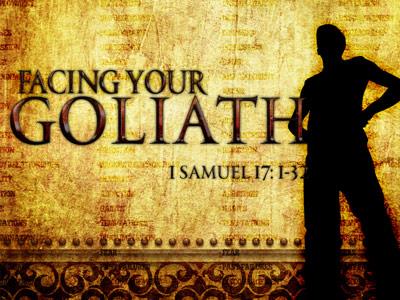-
Praying Powerful Prayers Series
Contributed by Brian Bill on Feb 19, 2024 (message contributor)
Summary: God gives us more strength than we can even ask for when we fully surrender to Christ.
How to Pray with Power
Rev. Brian Bill
February 17-18, 2024
A young boy prayed for weeks that God would give him $100, but nothing happened. He decided to write God a letter telling Him he really needed the money. Not knowing where to send the letter, he simply used the address “God, USA.” When the Post Office received the letter, they sent it to the President. The President was amused so he sent a $5 bill, thinking this would be a lot of money to the young boy. The boy was delighted to receive the money and sat down to write a thank you note to God, which read, “Dear God, thank you very much for sending the money. However, I noticed that for some reason you sent it through Washington, D.C., and as usual, those turkeys deducted $95 in taxes.”
This boy was not afraid to pray a big prayer! Instead of reading our passage which contains a really big prayer, I’m going to pray Ephesians 3:14-21 for each of us: “For this reason I bow my knees before the Father, 15 from whom every family in heaven and on earth is named, 16 that according to the riches of his glory he may grant you to be strengthened with power through his Spirit in your inner being, 17 so that Christ may dwell in your hearts through faith—that you, being rooted and grounded in love, 18 may have strength to comprehend with all the saints what is the breadth and length and height and depth, 19 and to know the love of Christ that surpasses knowledge, that you may be filled with all the fullness of God. 20 Now to him who is able to do far more abundantly than all that we ask or think, according to the power at work within us, 21 to him be glory in the church and in Christ Jesus throughout all generations, forever and ever. Amen.”
Here’s our main idea: God gives us more strength than we can even ask for when we fully surrender to Christ.
Here are a few observations that will help us understand this powerful prayer.
• This prayer is Trinitarian. All three members of the Trinity are mentioned. Verse 14: “I bow my knees before the Father…” Verse 16: “…that according to the riches of his glory he may grant you to be strengthened with power through His Spirit…” And in verse 17: “So that Christ may dwell in your hearts…” The most common way to pray in the Bible is to address prayers to the Father, through the Son, and in the Spirit. However, it’s certainly appropriate to address Jesus and the Holy Spirit when we pray.
• This prayer is focused on our inner person, not on our bodies. So many of our prayers have to do with our health and physical needs. Paul is more concerned with how we’re doing on the inside. In fact, all of Paul’s prayers recorded while in prison, dealt with the believer’s spiritual condition, not the physical. While there is nothing wrong with praying for physical health, Paul’s primary concern is internal, not external.
Related to this, one pastor suggests most of our prayers fall into two categories:
1) Pain-avoidance: “Lord, this hurts too much. Make it stop.”
2) Change of circumstances: “Lord, I don’t like this situation. Change it, please.”
Interestingly, we don’t see Paul praying these kinds of prayers, even though he was in chains in prison (see Ephesians 6:20).
• Paul prayed with passion. The Apostle did not just pray with his mind – he threw his heart into his prayers. Paul prayed with fervency and a sense of urgency, much like Daniel did.
• This prayer is focused on the need for power. The word “power” or “strengthen” is used four different times. If the prayer in chapter one was for enlightenment so we might know God’s power, this prayer is for empowerment, so we will use the power of God available to us.
In this passage we’ll see the posture of prayer, the petitions of prayer, and the power of prayer.
1. The posture of prayer (14-15). The first thing we notice is Paul’s posture: “I bow my knees before the Father.” To “bow” means, “to bend in homage, to stoop in reverence and submission.” There are various postures of prayer seen in Scripture – Abraham stood (Genesis 18:22-23), David sat (1 Chronicles 17:16), while Jesus fell on His face and prayed (Matthew 26:39). The normal way for Jews to pray was standing up (Mark 11:25).
When the situation was dire and the individual was broken, or the one praying wanted to demonstrate humility in the face of an extraordinary event, he or she would hit their knees. To kneel represents humility and adoration before God. We see this in Psalm 95:6: “Oh come, let us worship and bow down; let us kneel before the LORD, our Maker!” Solomon, Ezra, Daniel, Jesus, Stephen, Peter, and Paul hit their knees when they prayed.

 Sermon Central
Sermon Central



